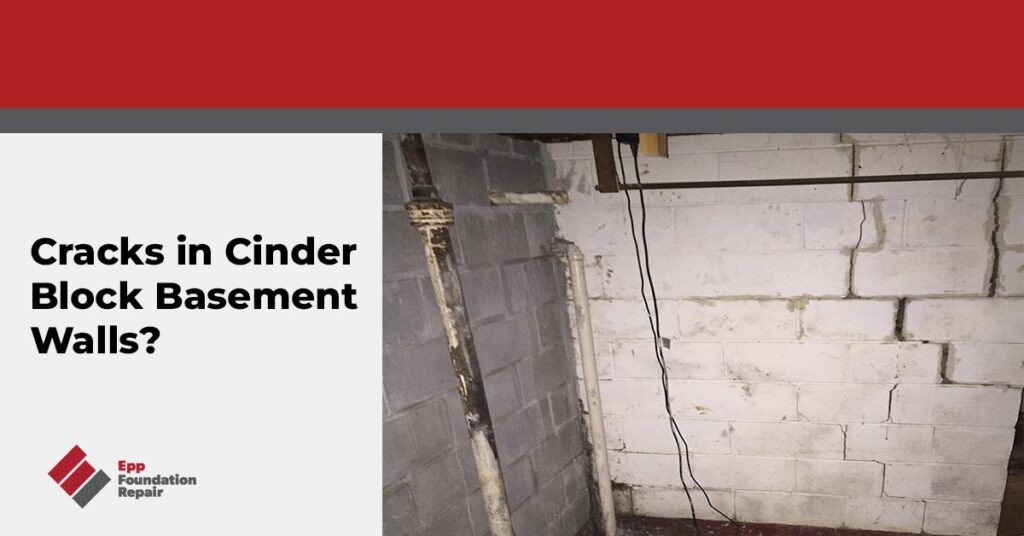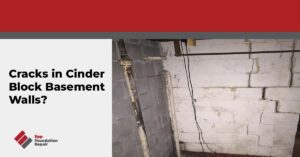Are you looking for information about cinder block repair because you have a cracked basement wall made out of cinder blocks? If so, you’ve landed on the right page. In this article, we’re going to cover why cinder blocks are used to construct foundation walls, common problems associated with cinder block basement walls, the causes of the issues, and possible repair solutions.
What Are Cinder Blocks?
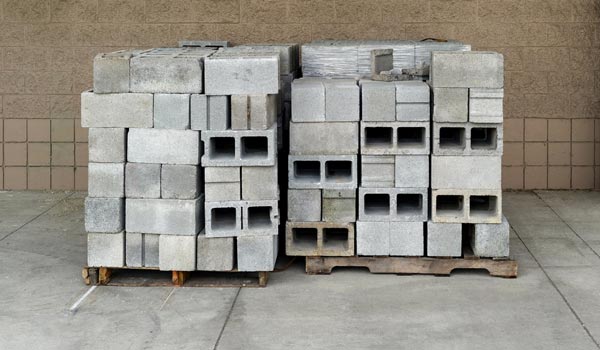
Cinder blocks are building materials made from concrete and coal cinders. They are sturdy, fireproof, and inexpensive, making them popular for construction projects. The hollow rectangular blocks can be stacked and mortared to form walls for homes and other structures. For decades, their durability and low cost have made cinder blocks a fixture in residential construction.
Why Are Cinder Blocks Used To Build Foundation Walls?
Cinder blocks are commonly used to build foundation walls for several reasons:
- They are inexpensive and widely available. Cinder blocks can be purchased at most home improvement stores and are relatively cheap compared to other building materials.
- They are durable and long-lasting. Properly installed cinder block walls can last for decades with minimal maintenance. The dense concrete material is resistant to pests, rot, and degradation.
- They are easy to work with. Cinder blocks are large, modular units that are easy to stack and assemble. No special tools are required, and the blocks can be cut to fit spaces.
- They provide good insulation and temperature regulation. The thick, solid concrete blocks help regulate temperature and prevent heat transfer, improving energy efficiency for basements and foundations.
Common Problems With Cinder Block Basement Walls
Cinder block basement walls are inexpensive and easy to construct but have some downsides. Here are a few common problems with cinder block basement walls:
- Moisture seepage – The porous nature of cinder blocks allows water to seep through, which can lead to damp, musty basements. The seams between blocks are especially vulnerable to leaks. Applying a sealant to the walls can help reduce moisture issues.
- Cracking – As the ground shifts over time, it can stress cinder block walls and cause cracks to form. The mortar between blocks can also crack and crumble. For minor cracking, patching and sealing the walls may be sufficient. More severe cracking may require professional foundation repair or replacement.
- Pests – The gaps and cracks in cinder block walls provide easy access points for rodents and insects. Filling gaps and repairing cracks helps eliminate pest entrances. It’s also a good idea to clear away any debris outside the foundation wall that could harbor pests.
What Causes Cracks In A Cinder Block Foundation Wall?
Several factors, including the following, can cause cracks in a cinder block foundation wall:
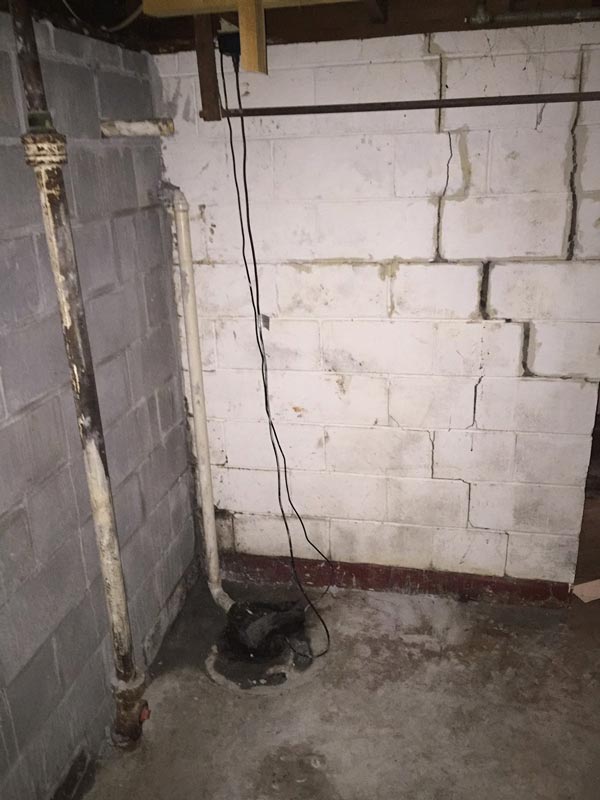
- Differential foundation settlement – As a home ages, it can settle unevenly into the ground, causing the foundation to crack. This is common in areas with clay soil or places that experience extreme weather changes. See the infographic below for a visual depiction of differential settlement.
- Hydrostatic pressure – Excess moisture in the ground around the foundation caused by poor drainage causes hydrostatic pressure to build up and push against foundation walls. The wall will eventually bow inward and even crack if the pressure isn’t relieved.
- Water damage – Excess moisture can seep into the cinder blocks and freeze, expanding and cracking the foundation. Cracks near the bottom of the wall may indicate water damage.
- Poor construction – If the cinder blocks were laid unevenly or the mortar was poorly applied, it can lead to cracks forming over time. Using low-quality materials or improper techniques during construction may eventually result in cracks.
To repair cracks in a cinder block foundation, you may need to re-mortar the blocks or install a waterproof sealant or epoxy injection, depending on the severity of the damage. However, cracks in a cinder block basement wall caused by differential settlement or hydrostatic pressure must be repaired by a professional foundation repair contractor. It’s best to consult a foundation expert to evaluate all cracks and recommend appropriate repairs.
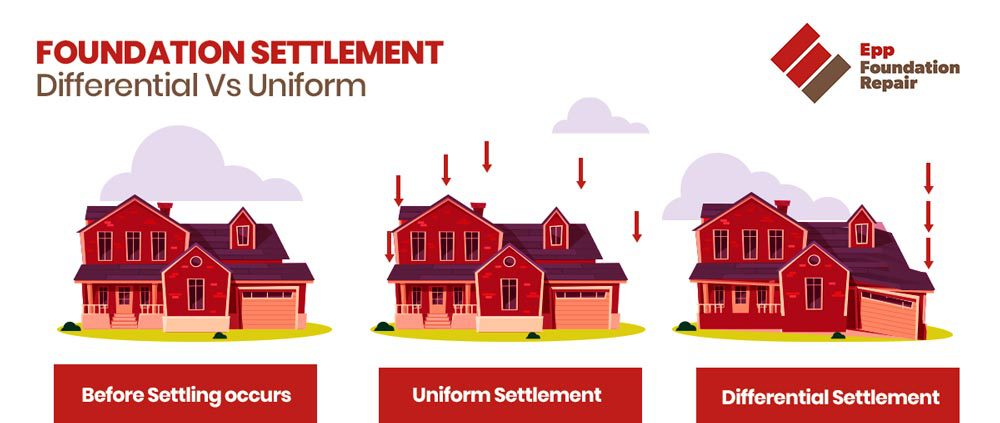
Possible Repair Solutions For A Cinder Block Basement Wall
Some possible repair solutions for a cinder block basement wall include the following:
- Apply a waterproof sealant or epoxy coating to the cinder blocks. This prevents further water damage and seals up any cracks.
- Install drainage panels along the base of the wall. These absorb water and direct it away from the foundation, preventing seepage through the blocks.
- Install a drain tile system. This will prevent excess moisture from building up in the ground around the foundation, thereby preventing hydrostatic pressure from building up and pushing against the basement wall. For more information, see What Is Drain Tile?
- Install steel beams or braces along the wall to add structural support. This stabilizes bowing or leaning walls and prevents further shifting or cracking.
- Carbon fiber straps are another way to stabilize bowed and/or cracked basement walls.
- Remove and replace damaged cinder blocks. If blocks are crumbling or cracked, they can be removed and new blocks installed in their place. Fresh mortar is used to seal the new blocks in place.
- Apply a cement plaster or stucco coating to the wall. This covers up cracks and imperfections and provides a smooth, water-resistant surface.
Tips On Preventing Cracks In Cinder Block Basement Walls
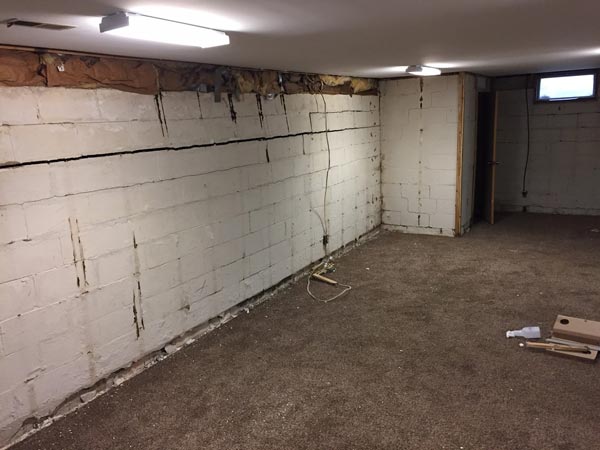
Over time, cinder block basement walls can develop cracks which can compromise the structural integrity of the building. Therefore, preventing cracks in cinder block basement walls is crucial to maintain the strength and integrity of the walls and protect the home’s foundation. Here are some tips that will help you prevent cracks in cinder block basement walls:
- Ensure proper drainage around the foundation – Hydrostatic pressure is one of the leading causes of cracks in basement walls. Make sure that your home’s drainage system is working correctly and that water isn’t pooling around the foundation, as this can cause clay-rich soil to expand and put pressure on the basement walls, leading to cracks. For more information on the importance of good drainage, see The Importance of Proper Foundation Drainage Around Your Home.
- Install a drain tile system along with a sump pump – If your basement is prone to flooding or excess moisture, it may be worth installing a drain tile system and a sump pump. A drain tile system prevents excess moisture from building up in the ground around the foundation.
- Control humidity levels – High humidity levels can also cause cracks in basement walls. Install a dehumidifier in your basement to keep the humidity levels in check and prevent moisture buildup.
- Proper insulation – Proper insulation can help prevent cracks in cinder block walls by regulating the temperature and preventing drastic temperature changes.
- Regular maintenance – Regular inspections and maintenance can help prevent cracks in basement walls by identifying any potential problems early on. If you notice any cracks in the walls, get them repaired as soon as possible.
By following these steps, you can prevent cracks in cinder block basement walls, which will help protect your home’s foundation. Remember, prevention is always better than cure.
If you’re concerned about a crack in your cinder block basement wall, contact us today to schedule an evaluation. Since 1994, we’ve helped clients in Lincoln, Omaha, Southeastern Nebraska, Northwestern Missouri, and parts of Northeastern Kansas with foundation repair, concrete leveling, basement waterproofing and crawl space encapsulation for their homes.

